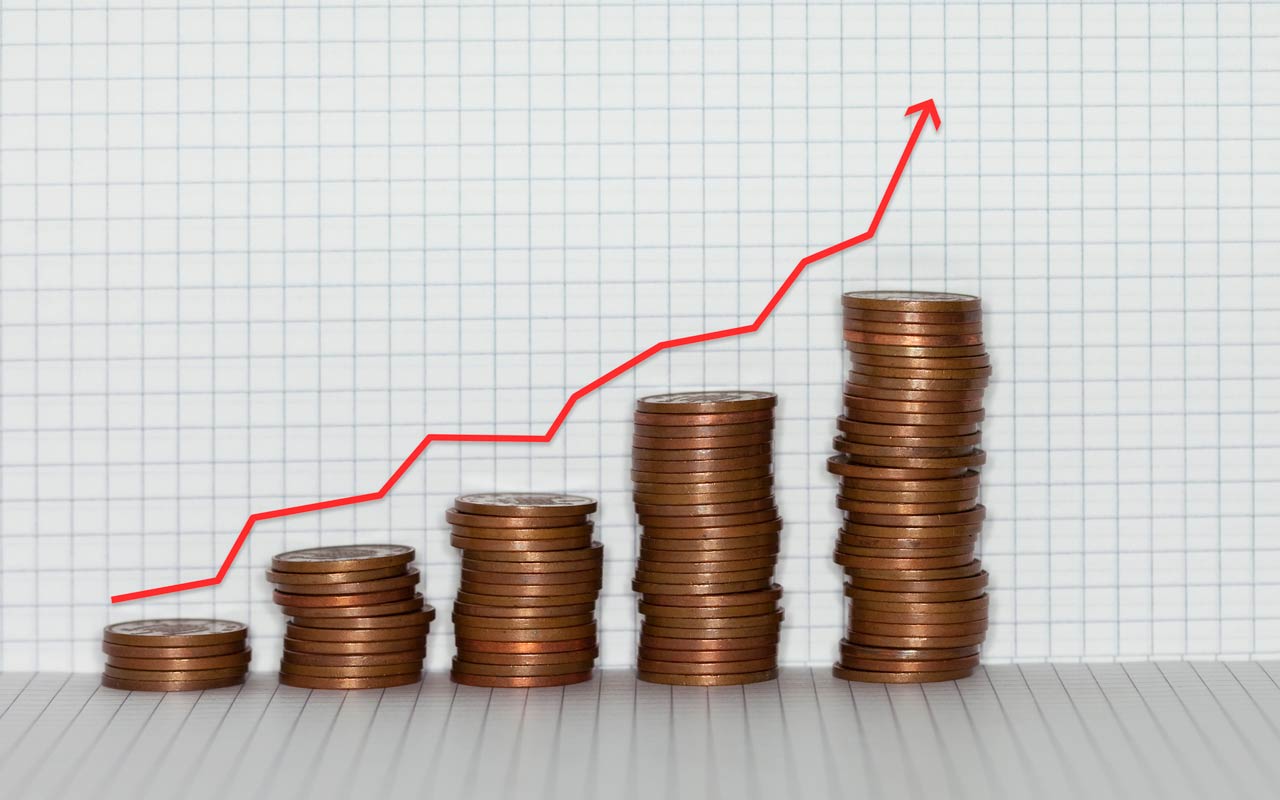Interest Rates Have Been Rising. Are Investors Ready?
There are several steps people might want to consider taking right about now. Here's how to evaluate your own investment, saving and debt situation and prepare for the changes ahead.


The Federal Reserve has been gradually raising interest rates since December 2015. But it wasn’t until recently that investors started paying closer attention to how this change could impact borrowing costs and their portfolios.
If you’re worried about what rising rates could mean for you and your investments, you’re not alone. Over half (58%) of investors expressed some level of concern about rising interest rates in a survey from Ameriprise Financial. Among those who expressed significant concern, many believe that rate increases could hurt their investments or create financial challenges for them in the near-term. As the Fed patiently evaluates future rate hikes, now may be the time to take action if you have similar qualms. Here are some tips to help protect your portfolio in a changing environment.
Assess your financial situation
First, review your portfolio and evaluate how an interest rate increase could affect your finances. For example, if you are invested in bonds, know that generally when interest rates rise, the bonds you own decline in value. Rising rates also boost the cost of borrowing, potentially affecting anyone taking out new student loans or home mortgages, as well as anyone with credit card balances and home equity lines of credit. On the bright side, a rising rate environment gives investors opportunity for a better return on cash deposits, such as savings accounts, money-market funds and new CDs.

Sign up for Kiplinger’s Free E-Newsletters
Profit and prosper with the best of expert advice on investing, taxes, retirement, personal finance and more - straight to your e-mail.
Profit and prosper with the best of expert advice - straight to your e-mail.
Steps to consider:
- Assess how much interest rate risk your investments are exposed to and evaluate whether this is aligned with your comfort level. Rising interest rates do not impact all bonds equally, therefore it may be helpful to work with a financial professional to assess your risk tolerance based on your exact holdings, personal circumstances and investment objectives.
- Check your deposit accounts to see what your cash is earning and research rates to determine whether your money is making as much as it can.
- Review the rates on your existing debt accounts (i.e., credit cards and loans) and understand the type of interest you are paying. Take note of which ones, if any, have variable rates and consider how higher interest payments on these accounts may impact you.
Create a financial plan
Having a financial plan can help alleviate concerns and boost your confidence. If you don’t have a plan, it’s not too late to develop one. A financial professional can help you get started by determining your goals and what it will take to achieve them, and then selecting strategies and investments that can help you achieve them. Diversify your portfolio to help both reduce the negative impacts of rising rates and benefit from this atmosphere.
Steps to consider:
- Embrace diversification by spreading your investments across different asset classes, including stocks, bonds, cash and potentially alternative investments, such as real estate.
- If you have bonds in your portfolio, it may seem tempting to reduce your bond holdings in a rising rate environment, but don’t succumb to fear. Holding a bond until it matures can help avoid a loss when rates rise since you will earn back the principal value of the bond plus interest payments at maturity. And, keep in mind that owning some bonds, in addition to other assets, remains an effective way to reduce overall risk in your portfolio.
- If you want to grow your savings, consider putting it in a high-earning deposit account. As an example, if you put $5,000 in a savings account with a 2.20% rate of return, your savings will earn $110 after one year, $222 after two years, etc.
Pay attention to your debt
What sources of debt do you have? Does it make sense to refinance? Do you plan to take on more debt in the near future? These are all questions you should ask yourself as rates rise. Also, look at the interest rates on your existing loans and credit cards. If you have any debts that are subject to variable rates, you’ll want to keep an eye on them. The interest incurred from these loans is likely to trend upward with rising rates, so consider looking for a better deal. If you have a major purchase on the horizon and your finances are in good shape, remember that rates are still historically low, so it may make sense to take on some “good” debt (school loans or a home mortgage, for example) now.
Steps to consider:
- If you have any loans that carry variable rates, consider refinancing to lock in a fixed rate.
- Try to pay down debt faster. For example, use your tax refund or a year-end bonus to more quickly chip away at debt.
- Call your credit card company to try to negotiate a lower rate.
- Don’t panic if you need to take out any new loans. Instead, take the time to shop around for the lowest rates possible.
Consider help from a financial professional
If the changing investment environment keeps you up at night, it may be beneficial to sit down with a financial professional. A financial adviser can help assess your situation, develop a plan, rethink your risk tolerance and determine whether you may need to adjust your investment strategy.
As with any market changes, don’t lose sight of your long-term goals as rates continue to rise. Use it as an opportunity to review and diversify your portfolio to help mitigate loss. With a long-term strategy, you’ll be better prepared to handle rising interest rates and anything else that could impact your financial situation.
This information is being provided only as a general source of information and is not intended to be the primary basis for investment decisions. It should not be construed as advice designed to meet the particular needs of an individual investor. Please seek the advice of a financial adviser regarding your particular financial concerns.
There are risks associated with fixed-income investments, including credit risk, interest rate risk, and prepayment and extension risk. In general, bond prices rise when interest rates fall and vice versa. This effect is usually more pronounced for longer term securities. Diversification does not assure a profit.
Get Kiplinger Today newsletter — free
Profit and prosper with the best of Kiplinger's advice on investing, taxes, retirement, personal finance and much more. Delivered daily. Enter your email in the box and click Sign Me Up.

Marcy Keckler is the Senior Vice President, Financial Advice Strategy and Marketing at Ameriprise Financial. She leads the overall strategy for financial advice at the firm, including the Ameriprise Client Experience and Confident Retirement programs. Marcy has been with Ameriprise Financial (formerly American Express Financial Advisors) for more than 25 years in a variety of positions in financial planning, marketing and interactive development.
-
 Designing Your 'Immortal' Financial Plan
Designing Your 'Immortal' Financial PlanExplore an approach that offers solutions for those navigating the intersection of longevity, fulfillment and financial security.
By Dennis McNamara
-
 How to Protect Your Privacy While Using AI
How to Protect Your Privacy While Using AIHow to keep your information and finances safe while using AI, including ChatGPT and Perplexity.
By Bob Haegele
-
 A QLAC Does So Much More Than Simply Defer Taxes
A QLAC Does So Much More Than Simply Defer TaxesHere are the multiple ways you can use a QLAC, from managing retirement risks to creating income for specific retirement needs and wants.
By Jerry Golden, Investment Adviser Representative
-
 Self-Directed Brokerage Accounts: Retirement's Hidden Gem?
Self-Directed Brokerage Accounts: Retirement's Hidden Gem?SDBAs are underused and have a reputation for being risky, but when managed carefully they can help you grow your wealth faster than your company's 401(k).
By Scott M. Dougan, RFC, Investment Adviser
-
 Early-Stage Startup Deals: How Does a SAFE Work?
Early-Stage Startup Deals: How Does a SAFE Work?Investing in an early-stage startup can get complicated fast, so the venture capital industry turns to other investing options. One is a SAFE.
By Murat Abdrakhmanov
-
 Should You Hire a Public Adjuster for Your Insurance Claim?
Should You Hire a Public Adjuster for Your Insurance Claim?As natural disasters strike more often, insurance clients are asking, 'What should I do, or who should I hire, if my insurance company is jerking me around?'
By H. Dennis Beaver, Esq.
-
 Tips to Help Entrepreneurs Create Self-Sustaining Businesses
Tips to Help Entrepreneurs Create Self-Sustaining BusinessesWith the right processes and people in place, a truly sustainable business can be efficiently passed on to a successor and run profitably on its own.
By Jason L Smith, CEP®, BPC
-
 Navigating Annuity Taxation: A Guide for Financial Advisers
Navigating Annuity Taxation: A Guide for Financial AdvisersUnderstanding the essentials of taxation in retirement income strategies involving annuities helps ensure positive outcomes for clients.
By Jake Klima
-
 How Google Reviews Can Help (or Hurt) Financial Advisers
How Google Reviews Can Help (or Hurt) Financial AdvisersDon't leave your Google Business Profile unclaimed — someone else can make changes if they claim it. Also, here's what you can (and cannot) do with the reviews.
By Jeff Briskin
-
 How Baby Boomers and Gen Xers Are Redefining Retirement Living
How Baby Boomers and Gen Xers Are Redefining Retirement LivingBoth generations need to embrace change and leverage real estate as a dynamic asset in their retirement planning. Here's how financial advisers can help, too.
By David Conti, CPRC